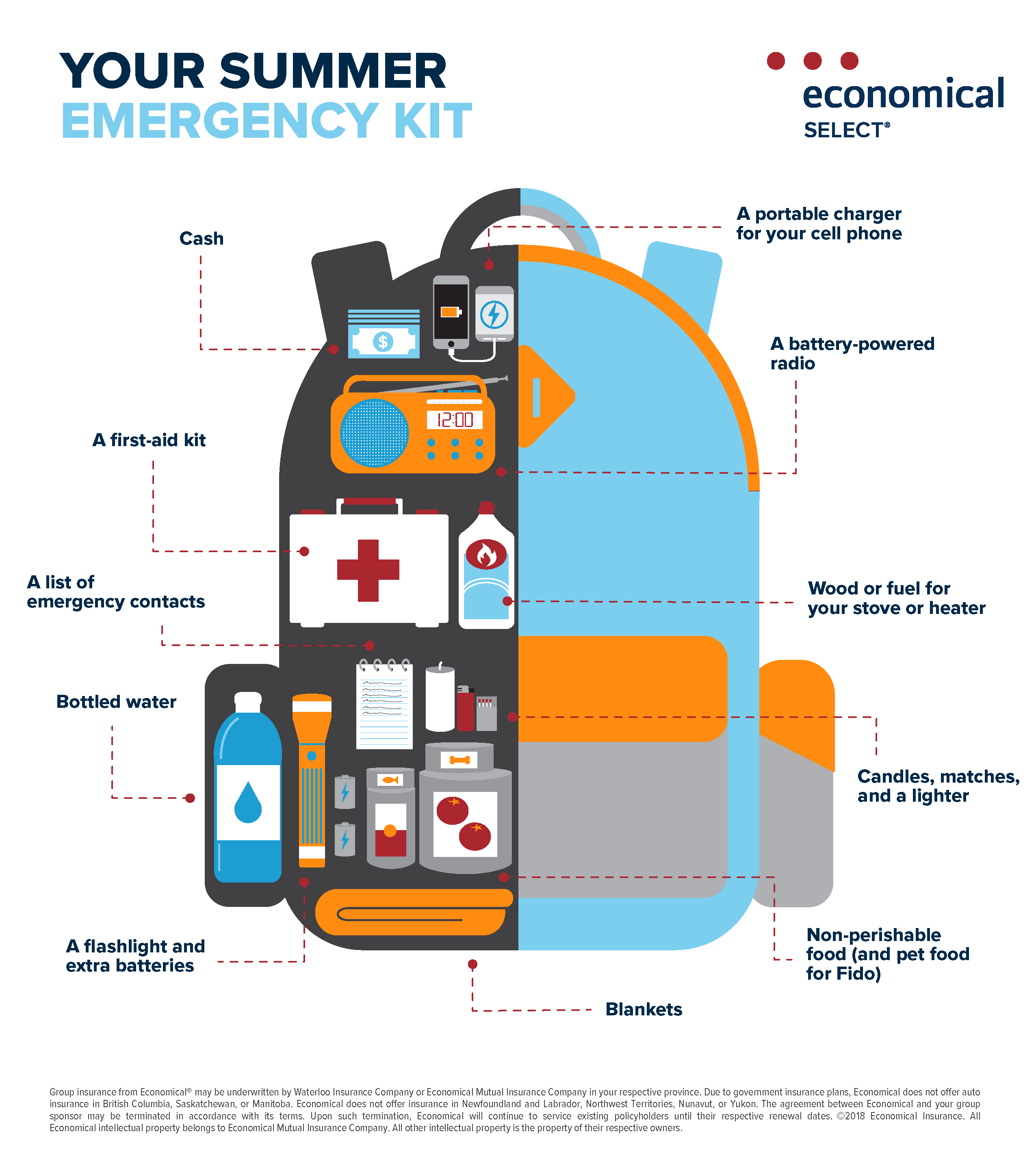Before, during, and after a windstorm
Written by Stephanie Fereiro | Published on: July 3, 2018 | Categories: Home insurance
Did you know that an estimated 50% of Economical home insurance claims related to wind damage happen in the summer? Strong, gusty winds can do some serious damage to your property and make for unsafe driving conditions. While most home and car insurance policies do include coverage for damage caused by windstorms, there are some things you can do before, during, and after a windstorm to stay safe and avoid damage to your property and your car.
How to prepare before a windstorm
Strong winds can cause damage to your property or lift up loose items and turn them into dangerous projectiles. Stay on top of these tips year-round so you’re always prepared for a windstorm:
- Trim your trees and shrubs. Make sure you keep all tree and shrub branches adequately trimmed so they don’t touch your house or nearby powerlines.
- Keep an eye out for dead trees. In a windstorm, dead trees or branches can easily crack and be thrown by the wind. Prune dead branches and cut down dead trees before a windstorm blows in.
- Regularly check your roof for loose or missing shingles. A roof that’s in good condition does a better job of protecting your home and preventing leaks. Not to mention, loose or lifting shingles are more likely to fly off and blow around during a windstorm.
When a storm is in the forecast:
- Secure your patio furniture and other loose items. If you can’t secure a loose item, you should bring it indoors or put it in the garage or shed. This includes patio, porch, or balcony furniture, standalone planters, toys, bicycles, and anything else that you can’t safely anchor.
- Avoid parking directly under trees. If you can, park your vehicle in the garage. If you don’t have a garage, you should park in a spot away from trees in case any branches or twigs break off during the storm and hit your vehicle.
- Stock your emergency kit. You’ll want to have access to at least three days’ worth of supplies for each member of your household (including pets) in case the power goes out or you can’t leave your home during the storm.

Viewing this from your smartphone? Click here to enlarge.
Your summer emergency kit
- A portable charger for your cell phone
- Cash
- A battery-powered radio
- A list of emergency contacts
- A first aid kit
- Bottled water
- Candles, matches, and a lighter
- A flashlight and extra batteries
- Blankets
- Non-perishable food (and pet food for Fido)
- Wood or fuuel for your stove or heater
What to do during a windstorm
When a windstorm hits, your priority should be to stay safe, wherever you are. Keep these tips in mind:
- Get off the road. If you’re out and about, try to find a safe place to park, like an underground parking garage.
- Take shelter in a solid building. Preferably in the basement and away from windows and doors.
- If you can’t get inside, find shelter outdoors. Try to find a sheltered area away from trees or loose objects that could blow towards you. Depending on the severity of the storm, you may want to consider lying face down in a ditch or other low area. You should avoid bridges and overpasses, too.
What to do after a windstorm
Keep these tips in mind once the wind lets up:
- Never touch downed powerlines or electrical equipment. If you notice damaged electrical wires or your home’s power has gone out, call your hydro provider right away.
- Inspect your roof for damage. If you notice any loose shingles on your roof or around your property, you’ll want to arrange to have your roof repaired as soon as possible to avoid further damage.
- If your home has sustained damage, contact your group’s insurance broker. If you need to make a home insurance claim, call your group’s broker or your insurance company’s 24-hour service line. Be prepared to provide some important details about the incident to help make sure your claim goes as smoothly as possible.
Wondering how your own home insurance policy would apply in the event of a windstorm? Review your policy or contact your group’s licensed home insurance broker.
Share these tips on Facebook or Twitter to help your neighbours stay safe and avoid property damage next time a windstorm blows through town.